Reading and Writing Strategies for High School Students
Are yous educational activity a range of readers at the heart or high school level and looking for ways to scaffold comprehension of complex texts? In this postal service, you'll detect reading strategies that are imperative to support students' metacognitive processes.
Equally I've spent time working with various levels of middle and high school learners, I've experimented with direct instruction of reading strategies. While there is a movement for schools to focus less on teaching reading skills and more than on fostering a love for reading, I meet the necessity for both.
In order for students to dear reading, they need to feel confident with it. Even as I earned my primary's degree in reading as an adult, I learned more near what good readers do. When I am cognizant of the strategies I'grand using to make meaning from the text, I feel empowered. We should want our students to feel that same sense of control, purpose, and accomplishment equally they arroyo the reading process.
Do professional athletes accomplish their skill level without practice? Do famous chefs become successful without honing their culinary skills for years? Of grade non. In that same way, readers (especially striving readers) need to be taught how to tackle hard texts. Students' love for reading often emerges after they connect with a text that is relevant to their lives and that they can read independently and confidently.
What then, should teachers focus on when it comes to teaching students to master and monitor their own idea process? There are and so many reading skills we could focus on with secondary students! The strategies that follow are the some of the ones I have found to straight bear on basic comprehension of a text.
Skill: PREDICTING
Help heart and loftier schoolhouse readers prepare to approach the text by modeling how to preview. Tell students nearly text features, show them examples, explain their purposes, and talk about how readers should use text features to improve navigate a the piece purposefully.
Strategy: Zoom In…Zoom Out
In my classroom, we do identifying text features in fiction and nonfiction texts, in visual texts, and on the web. This procedure – zooming in, previewing the text features to gather information – is a critical first step in predicting.
In one case you have previewed the text with students, zoom out! Guide them through the initial prediction process. At first, y'all may wish to provide your readers with a couple templates to fill in.
- Based upon ______________ (specific data gathered from text features), I predict ___________ (students' specific prediction about what they volition read).
- I predict ___________ because __________.
I teach my students that fictional text predictions should focus on plot, setting, characters, and theme. How practise the clues in the peritext, affiliate titles, and teaser lead us to predictions nosotros can monitor every bit we read?
Nonfiction predictions should exist centered around the principal points and author's purpose. Consider the text structure. Zoom out! When previewing, talk over how the writer has intentionally congenital in text features to create meaning and system.
When making predictions, identifying an author's purpose for writing (to inform, persuade, argue, compare, entertain, etc.) also helps students to make more educated guesses about the content.
Strategy: Monitor It
The real benefit with predicting, however, is the part that often is forgotten. As students read, have them actively monitor their predictions. Pause to permit them to add to or alter their predictions as they reverberate on new textual prove.
Students tin keep rails of the reading strategies they are using with bookmarks. This bookmark set is differentiated and so that students accept choice and to keep them engaged!
Skill: INFERRING
Teachers need to anticipate places in complex texts where students will be dislocated if they don't make inferences most the author'southward intended pregnant. During my reading strategies unit, I cover dissimilar types of inferences students tin can make. For instance, students tin make inferences about actions, emotions, time periods, and settings. We study examples, and nosotros exercise inferring together.
Strategy: Combine It
Show students how to combine TEXT CLUES + Background KNOWLEDGE to infer. As scaffolding, we can give students inference stems, similar…
The text states ______, and I know ________, then I think ______.
Because struggling readers tin become confused and frustrated if they don't make required inferences with complex texts, I don't ask them to read inference-heavy texts on their ain (Think: "Masque of the Cherry-red Expiry," "The Ruddy Ibis," Loser).
Strategy: Simply Why?
Reading texts similar this together is an opportunity to teach students to re-read and ask, "Simply why?" Assistance them to dig into character motives.
On assessments and in conversation, use the word "infer" or "inference" in inference questions and so that students begin to understand that's what they are doing equally they read between the lines. For instance, What tin nosotros infer about Doodle after reading that he cried at the beauty of Old Adult female Swamp?
Railroad train students to inquire themselves whether they might be missing an inference when comprehension begins to falter and confusion settles in its place.
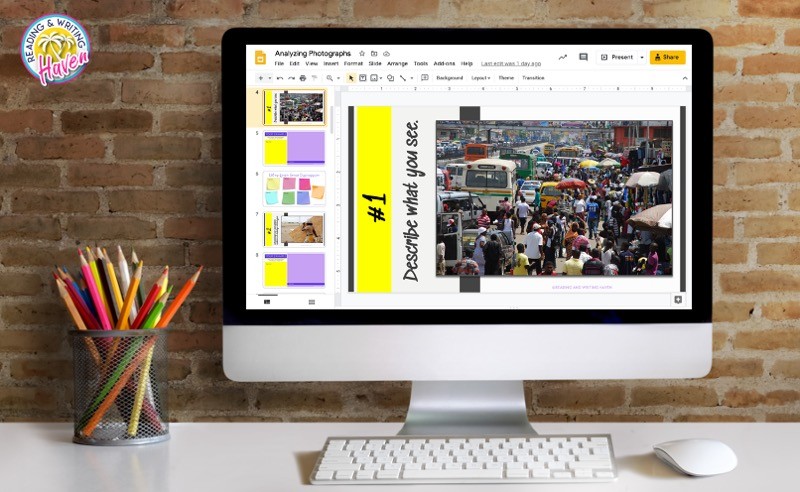
Information technology's helpful to introduce the concept of making inferences with visuals. This analyzing photographs lesson is a expert entry indicate for practicing perspective.
Skill: SUMMARIZING
Summarizing is my go-to reading skill for monitoring comprehension. When working with students who are reading a difficult text, it's imperative. Using summarizing with struggling readers is even more than important – if that's possible.
When reading a text with your course, pause oftentimes to check for understanding. I rarely enquire readers to read anything in their zone of frustration independently. As you read together, teach students to reflect on short segments of the text. Pose questions to get them thinking.
- Why did everyone recollect that Putter was going to die?
- Tell me the three most of import things that have happened so far in chronological society.
- Why did Doodle cry when trying to railroad train with Blood brother?
Strategy: Condense Information technology
Using concrete or virtual post-information technology notes to jot brief summaries can remind students to prioritize them. Add a layer of fun past rolling virtual dice to select a random number – 1-24. The total number of dots represents the exact number of words students have to write their summary. Considering of its concise nature, I love how this method emphasizes the value of each discussion.
Strategy: V-Fingers
After reading a fictional text, we reflect on the whole piece and write a 5-finger summary – i sentence for each office of the plot. Students may detect it easier to storyboard the plot first with quick sketches earlier writing the corresponding sentences.
Strategy: Study It
When summarizing nonfiction texts, I ask students to pretend like they are reporters. It gives them a specific process to follow, which reduces the guesswork and dubiety.
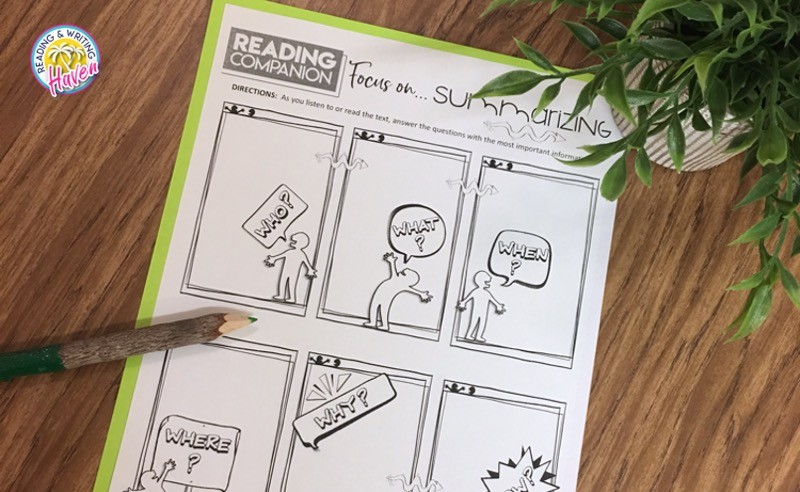
Graphic organizers provide unique scaffolding opportunities with reading strategies. This reading comprehension graphic organizer fix provides a depression floor, high ceiling approach to a variety of important reading skills. Students tin can employ them with whatsoever fiction or nonfiction text.
Skill: QUESTIONING
Questioning is a strategy that older readers don't always buy into. When teachers pose questions, they can respond, but request students to pose their own? It can be a tough sell at first.
It's astonishing how powerful student questions can be. Teach students how to ask questions about texts before, during, and afterwards reading. What is happening? Is it fair? From whose perspective is the story being told? Is the betoken of view reliable? Questions brand united states of america truly stop, reflect, and process what we are reading.
I tell my students:
- When you feel your mind beginning to wander from the text, draw yourself back in by pausing and asking clarifying questions almost what you lot just read.
- When you feel dislocated about what yous are reading, ask questions out loud. Talk to a friend or to the teacher. If you are at dwelling, write your questions down then that we can talk over them during class.
- When y'all think you empathize the text, look for deeper layers of significant. Enquire yourself,What might the author be saying about theme, life, conflict, people, stereotypes, or culture?
Introduce your readers to thick and thin questions, to "right-at that place" and "call back and search" questions. Teach them the deviation between a basic comprehension question and a discussion question. Also, make certain students empathise when and why to use each type.
But what near those kiddos who just don't accept whatsoever questions? When students can recollect of a question, take them write questions someone else might ask. What questions might a friend in grade right now exist wondering?
Strategy: Go Deep
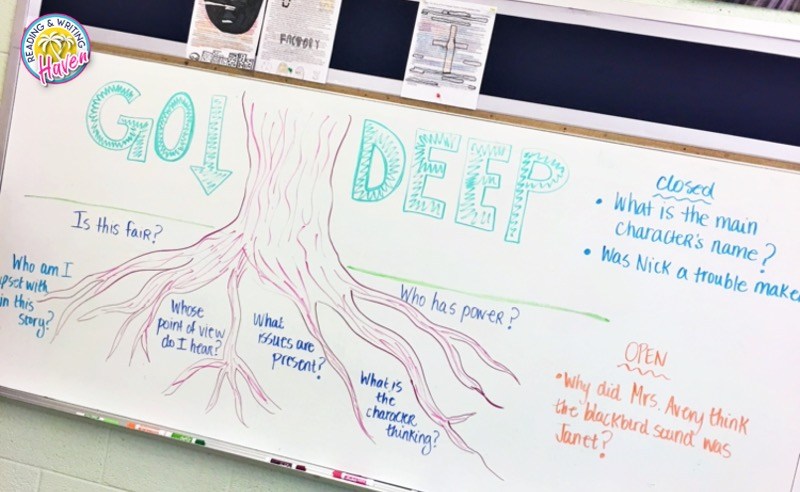
This visual from Serravallo's Reading Strategies Book is a powerful metaphor for request questions. Encourage students to dig into texts to peel back layers of significant.
Instruction reading in high school is a process of goal setting, reflecting, and growing. Teachers have to find what works best for their own students' needs. In my experience, these 4 reading comprehension strategies are disquisitional to scaffolding struggling readers' comprehension. Teaching students to be engaged, active readers is i of the keys to successful reading instruction. Nosotros tin exercise that by explicitly pedagogy reading strategies they tin add to their reading tool belts. Reminding students to employ them independently and conferring with them about their progress helps!
WHAT TO READ Adjacent:
- How to Teach Students to Summarize Nonfiction
- Reading Sprints: A How-to Guide
- How to Address Reading Comprehension Gaps in High School
RELATED Resource
I similar to use a variety of scaffolding materials when working with reading comprehension. The tools use similar wording and prompts, but the change in format keeps students from getting bored. These are two simple tools to use to encourage older students to read actively. They are great every bit formative assessments and tin be graded apace or just used as discussion pieces.
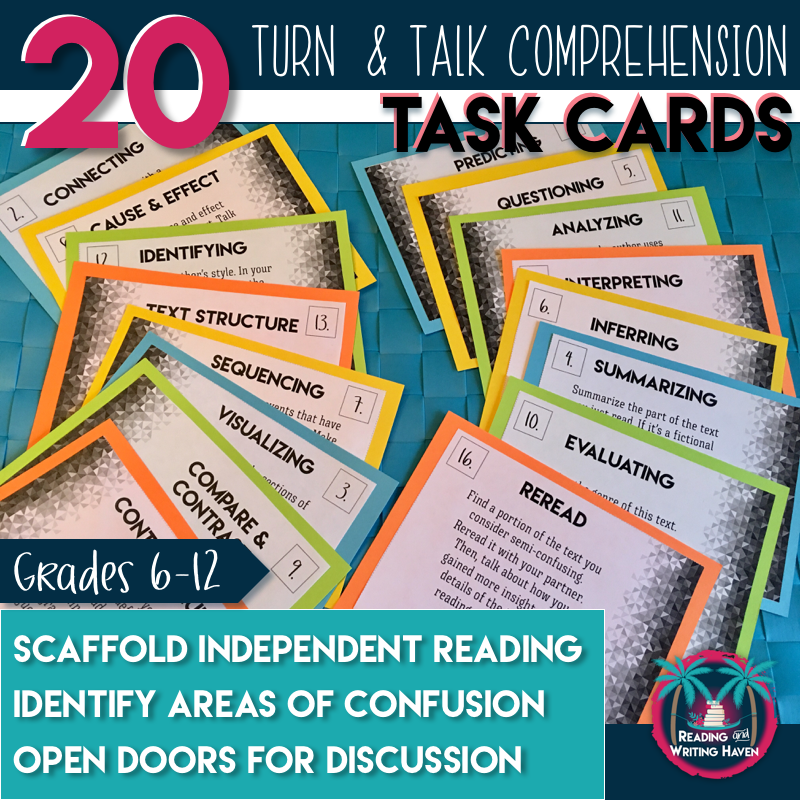

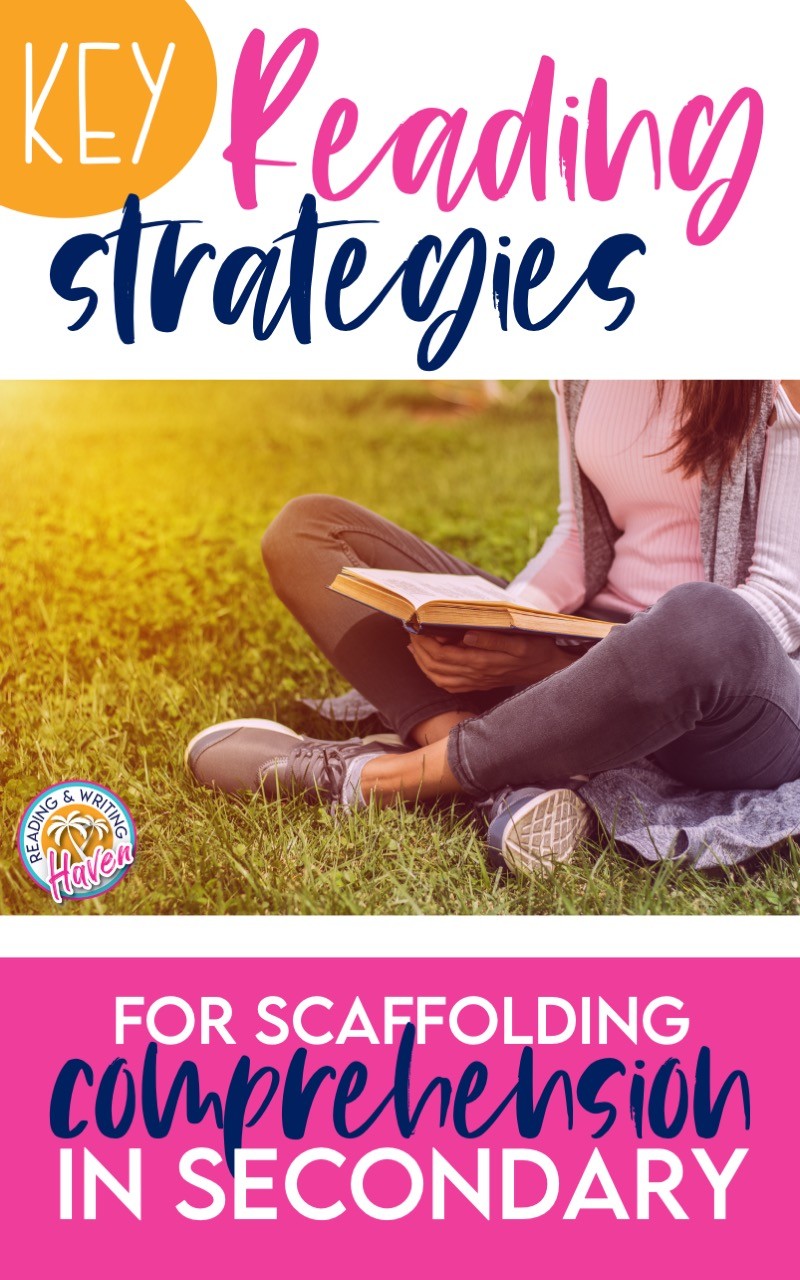
buchananthersom2002.blogspot.com
Source: https://www.readingandwritinghaven.com/important-reading-strategies-for-struggling-readers-in-high-school
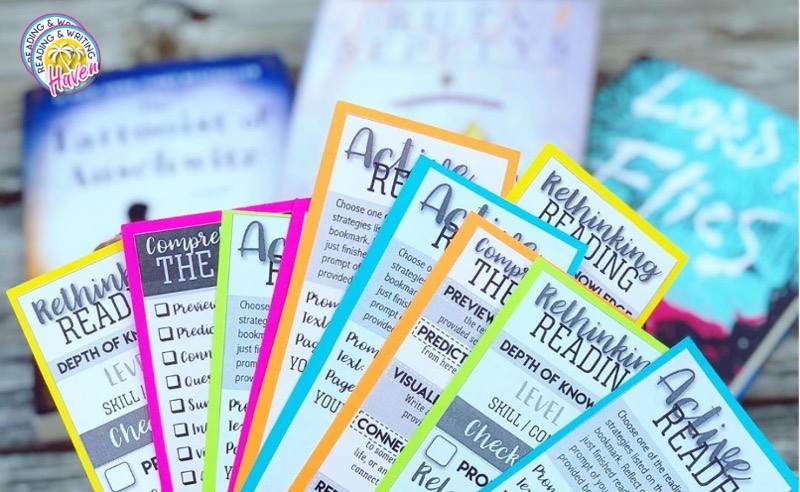
0 Response to "Reading and Writing Strategies for High School Students"
Publicar un comentario